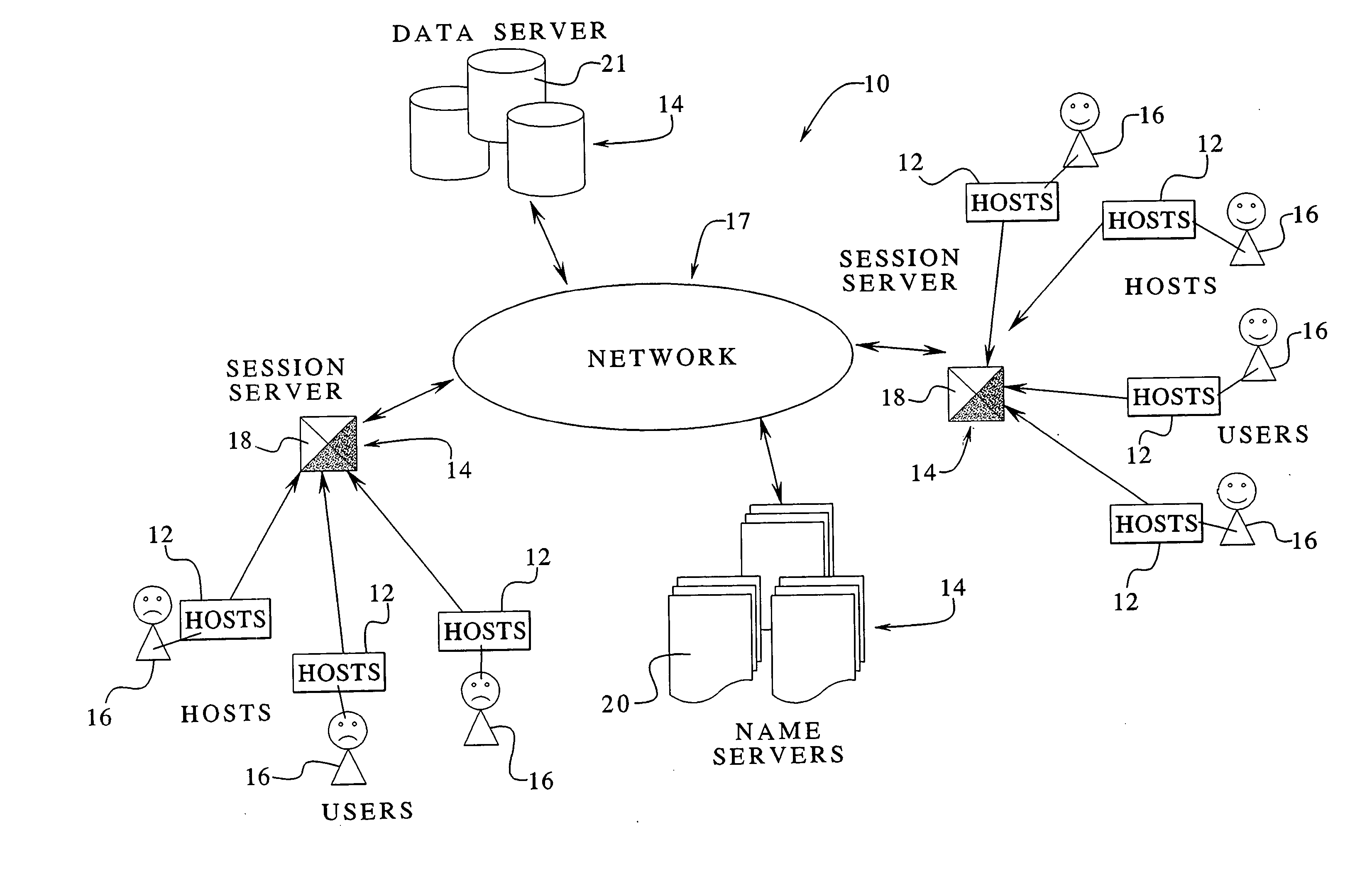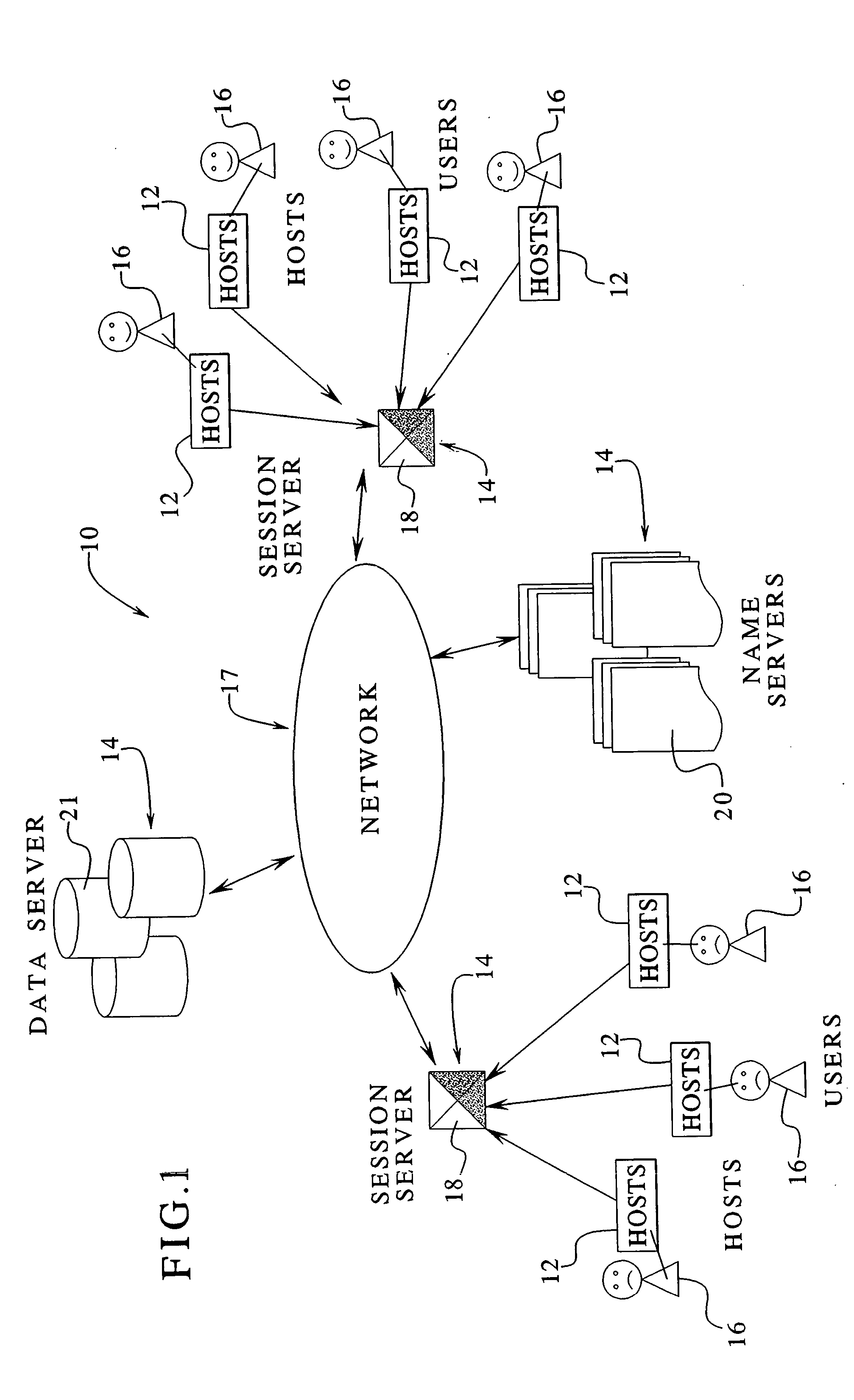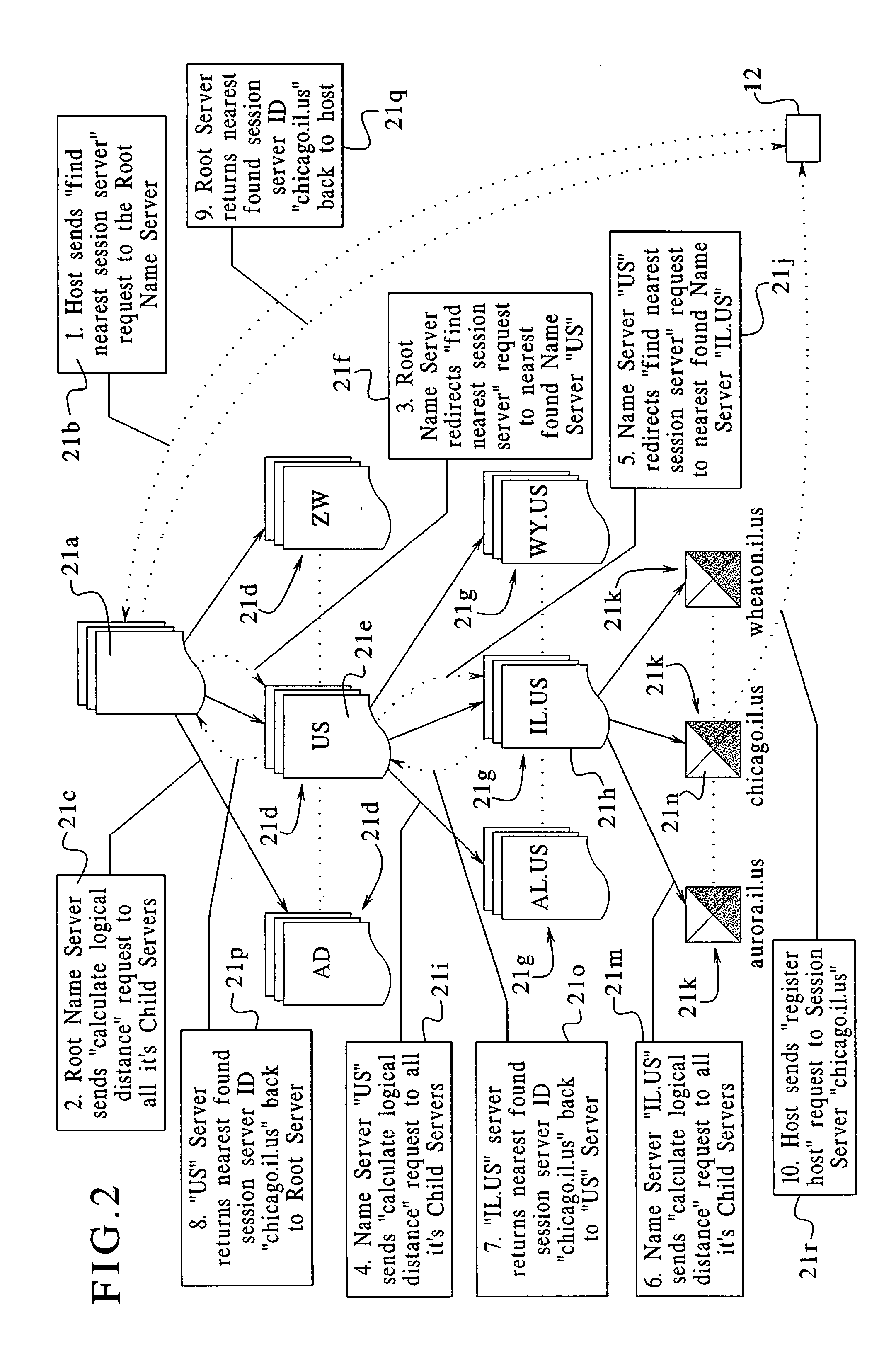Networked computer system for communicating and operating in a virtual reality environment
a computer system and virtual reality technology, applied in the field of networked computer systems for communicating and operating in virtual reality environments, can solve the problems of stateless model, low graphic quality, and restricting the user's possible actions within, and achieve the effect of facilitating communication and operation
- Summary
- Abstract
- Description
- Claims
- Application Information
AI Technical Summary
Benefits of technology
Problems solved by technology
Method used
Image
Examples
Embodiment Construction
[0045] The present invention provides networked computer systems that facilitate communication and operation within a virtual reality environment. The virtual reality environment replaces two dimensional icons, such those associated with conventional two dimensional graphical user interfaces, with three dimensional objects to work and operate computer files and applications. By utilizing three dimensional objects, a user and particularly an inexperienced computer user, can more easily and understandably use and operate a computer to communicate with other users and perform other tasks.
[0046] It should be appreciated that the virtual reality environment of the present invention can include a variety of different environments that each have a number of different objects. For example, one virtual reality environment of the present invention includes a home environment. The user can create, customize and use its virtual reality home environment in a similar manner that it can change th...
PUM
 Login to View More
Login to View More Abstract
Description
Claims
Application Information
 Login to View More
Login to View More - R&D
- Intellectual Property
- Life Sciences
- Materials
- Tech Scout
- Unparalleled Data Quality
- Higher Quality Content
- 60% Fewer Hallucinations
Browse by: Latest US Patents, China's latest patents, Technical Efficacy Thesaurus, Application Domain, Technology Topic, Popular Technical Reports.
© 2025 PatSnap. All rights reserved.Legal|Privacy policy|Modern Slavery Act Transparency Statement|Sitemap|About US| Contact US: help@patsnap.com



